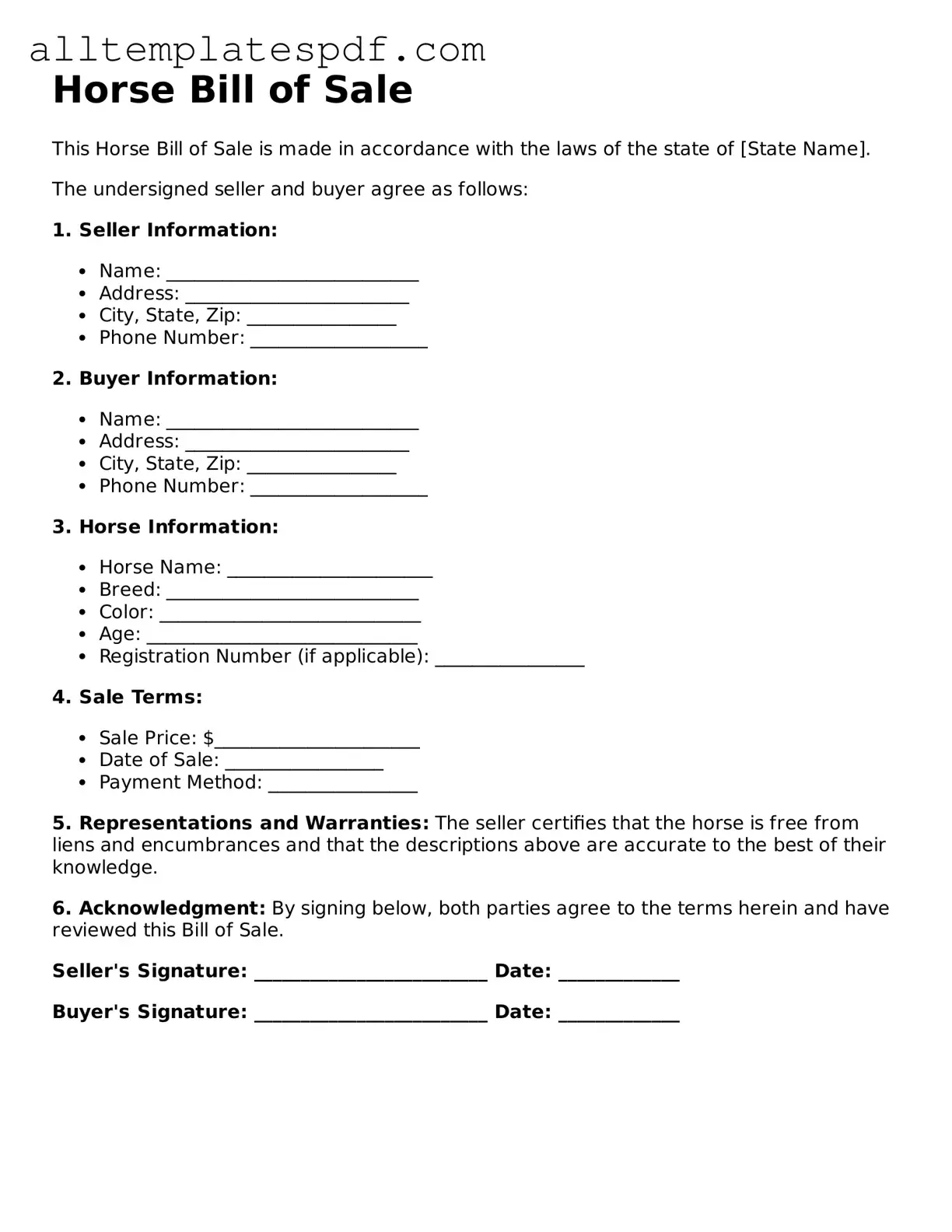When filling out a Horse Bill of Sale form, people often overlook important details. One common mistake is failing to include the complete and accurate description of the horse. This includes the horse's breed, color, age, and any identifying markings. A vague description can lead to disputes later on, so it’s crucial to be specific.
Another frequent error is not providing the seller's and buyer's contact information. Both parties should ensure that their names, addresses, and phone numbers are clearly written. This information is essential for any future communication or legal matters that may arise after the sale.
People also tend to forget to include the sale price of the horse. This is a critical component of the bill of sale. Without a stated price, it can create confusion about the terms of the sale. It is advisable to write the amount clearly and ensure both parties agree on it.
Additionally, some individuals neglect to sign the document. A Horse Bill of Sale is not valid unless it is signed by both the seller and the buyer. This signature serves as proof that both parties agree to the terms laid out in the document. Without it, the sale could be challenged.
Lastly, people often miss the importance of including any conditions of the sale. If there are specific terms, such as health guarantees or payment plans, these should be clearly outlined. Failing to do so can lead to misunderstandings and potential legal issues down the line.
